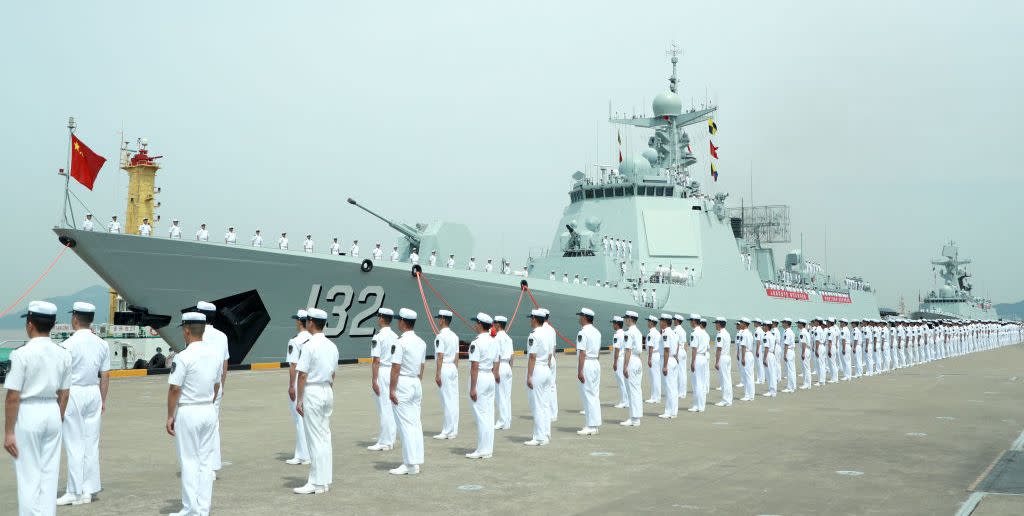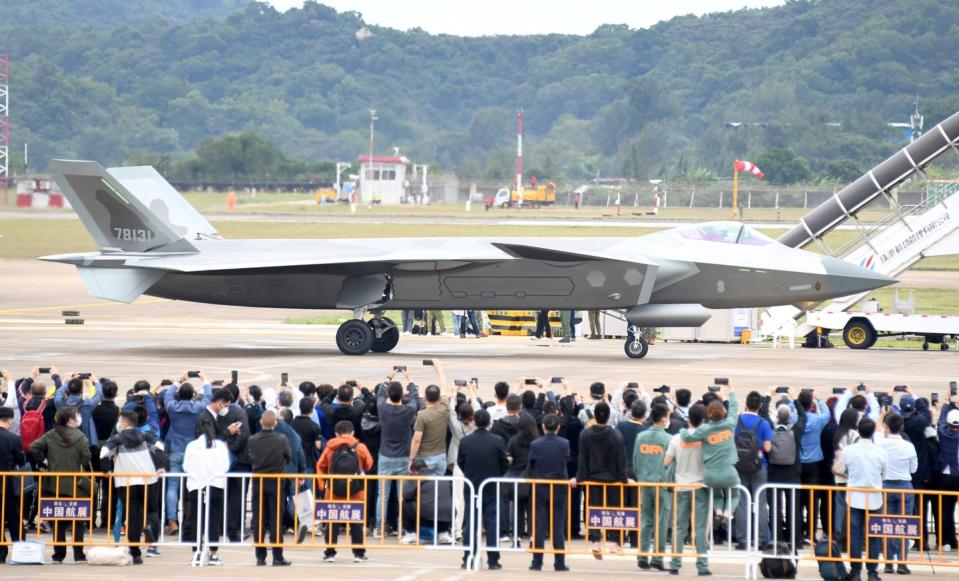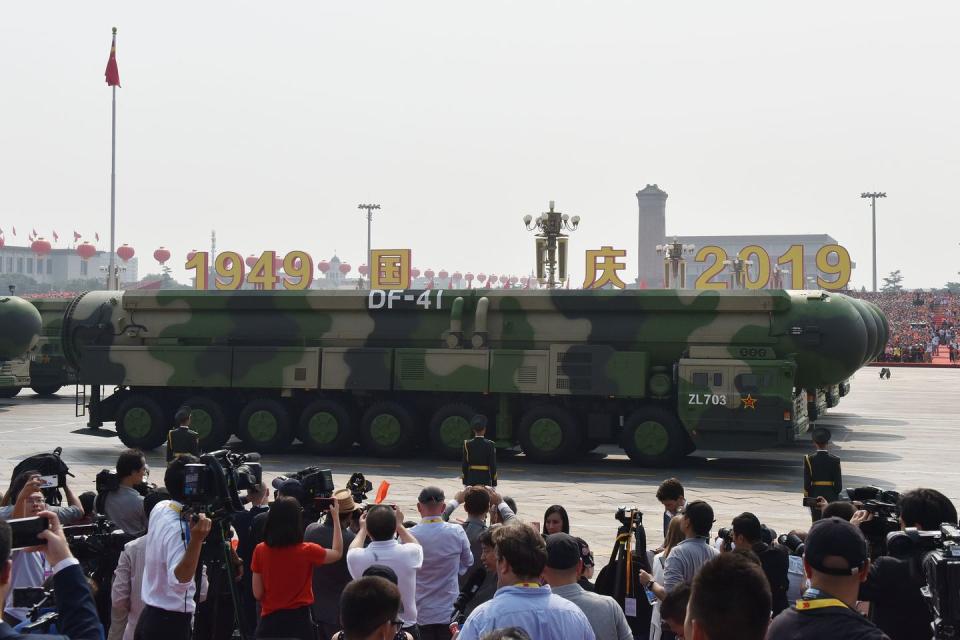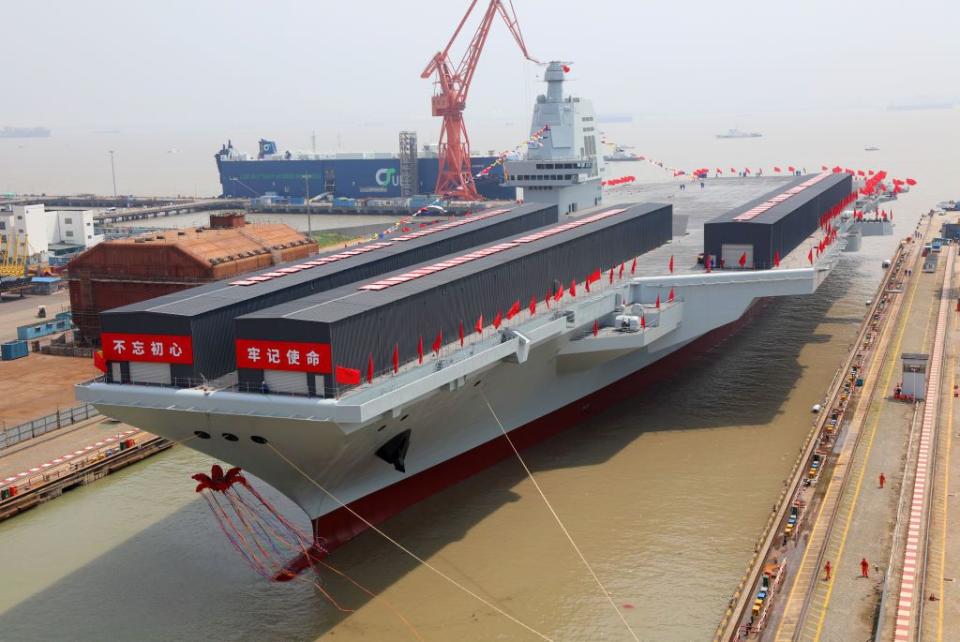The Pentagon’s New Report Sums Up China’s Big Goals: More Nukes and Pacific Forces

The Pentagon released its yearly report on the People’s Liberation Army this week.
The report states China is expanding its nuclear and conventional forces, with nuclear weapons undergoing a dramatic increase.
China appears focused on the Western Pacific and Taiwan, but for now that seems to be the limit of its immediate ambitions.
China is continuing to build up its air and naval forces in the Pacific, and it’s expanding its nuclear arsenal up to sixfold. That’s two takeaways from the Pentagon’s annual military report on China, which came out this week. What is still unclear, and what the report does not yet mention, is what lessons China might take away from the war in Ukraine if it someday decides to invade Taiwan.
🎖️ Don’t miss any of our best-in-class military and defense news. Join our squad with Pop Mech Pro.
The report, 2022 Military and Security Developments Involving the People’s Republic of China, was released on November 28. The annual reports, mandated by federal law, are an unclassified overview of new observations and trends inside the People’s Liberation Army (PLA), the blanket name for China’s military forces. (China’s army is technically the People’s Liberation Army Army, the navy is the People’s Liberation Army Navy, the air force is the People’s Liberation Army Air Force, and so on.)

The Pentagon states that China’s military policy includes “safeguarding its sovereignty, security, and development interests, while emphasizing a greater global role for itself.” The PLA is expected to complete a program of “mechanization, informatization, and intelligentization” by 2027, the 100th anniversary of the founding of the PLA. China expects its military to be a “world class” armed force by 2049, the 100th anniversary of the founding of the People’s Republic of China.
The PLA is approximately 2.2 million members strong, compared to the 1.4 million members of the U.S. military. The Chinese defense budget was $261 billion for 2021 (Sweden’s SIPRI think tank estimates it at $293 billion using other metrics), as opposed to $801 billion for the Pentagon. Beyond that, it’s hard to compare the two countries, as they have vastly different armed forces built for other reasons. The U.S. military is built for expeditionary warfare, while the Chinese military is concerned more about the homeland and the Western Pacific, though it does have eventual expeditionary ambitions. China and the U.S. have different nuclear doctrines, though they appear to be gradually coming to similar purposes—leading to a dramatic Chinese expansion.

One of the main takeaways from this report is insight on China’s ongoing buildup of nuclear weapons. The Pentagon estimates that China’s nuclear stockpile was in the “low 200s” in 2020, but an “accelerated expansion” means it probably has around 400 nuclear weapons today, and is on track to have 1,500 nuclear weapons by 2030. The nukes will go toward the hundreds of new intercontinental ballistic missiles China is building silos for, two new nuclear missile submarines, and the upcoming H-20 stealth bomber, which will have both dual nuclear and conventional missions.
The report claims that a change in nuclear policy is also driving the expansion. Until recently, China has built the minimum number of nuclear weapons it thought it needed to survive a first strike, then execute a counterstrike against enemy population centers. No adversary would trade the destruction of China for the loss of four or five of its largest cities. This also ensured that Chinese leaders could not get sucked into overthinking any nuclear crisis and would not spend massive amounts of money to build a large, expensive nuclear weapons enterprise.
That’s apparently changed. The Pentagon reports that China is shifting to a “launch on warning” policy, in which China would not wait for confirmation of enemy nukes detonating on its soil before launching the counterstrike. The United States and Russia both have launch-on-warning policies, which leave less margin for error and could lead to catastrophic accidents: In the event of a crisis, a computer, sensor, or other glitch could lead a country to believe it is under attack, prompting it to launch its own weapons before the imaginary attack.

Another major area of focus in the report is on Chinese naval forces. The report assesses the People’s Liberation Army Navy (PLAN) as “the largest navy in the world with a battle force of approximately 340 platforms, including major surface combatants, submarines, ocean-going amphibious ships, mine warfare ships, aircraft carriers, and fleet auxiliaries.” The PLAN is on track to a fleet of 400 ships by 2025 and 440 ships by 2030.
While the claim is true, it does need some clarification. China does have more warships, but the average weight by displacement per ship is much smaller than that of the U.S. Navy. The PLAN includes scores of smaller ships, including Type 056 corvettes and Type 022 missile boats that are more suited to coastal defense and have no equivalent in the U.S. Navy. The U.S. Navy’s warships are heavier than their Chinese counterparts in general, though that is gradually changing. The U.S. Navy also throws the comparison out of whack with its 11 aircraft carriers, each weighing approximately 100,000 tons, while China has two carriers in service with a weight of about 60,000 tons each.

Could China invade Taiwan now if it wanted? The report doesn’t take a position on that, and most outside analysts agree China lacks the air and sea lift to make a successful crossing—for now. The report does mention military options, short of all-out war, that China could undertake against Taiwan, including an air and naval blockade or the seizure of Kinmen, a Taiwanese island just off the coast of China.
The report also says that the capability to invade Taiwan is a key, if not the key military goal of China’s current military buildup.
You Might Also Like

